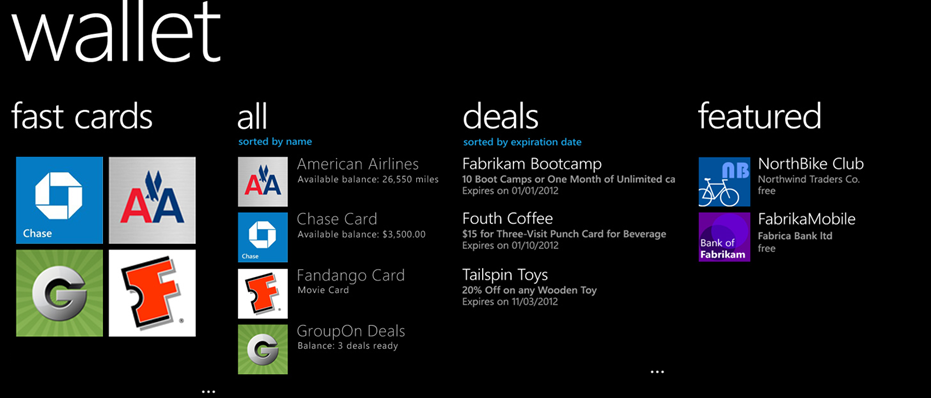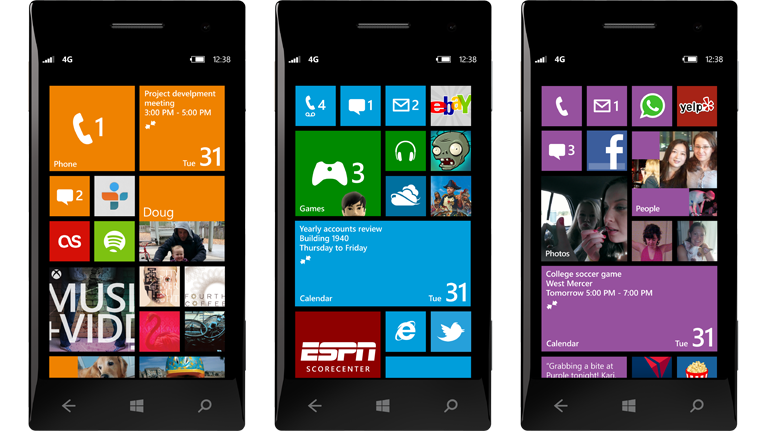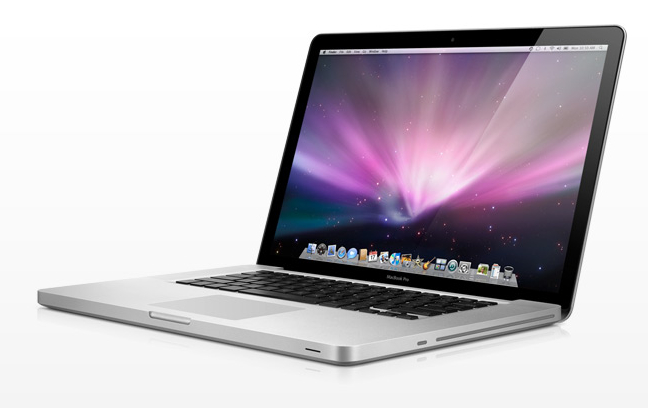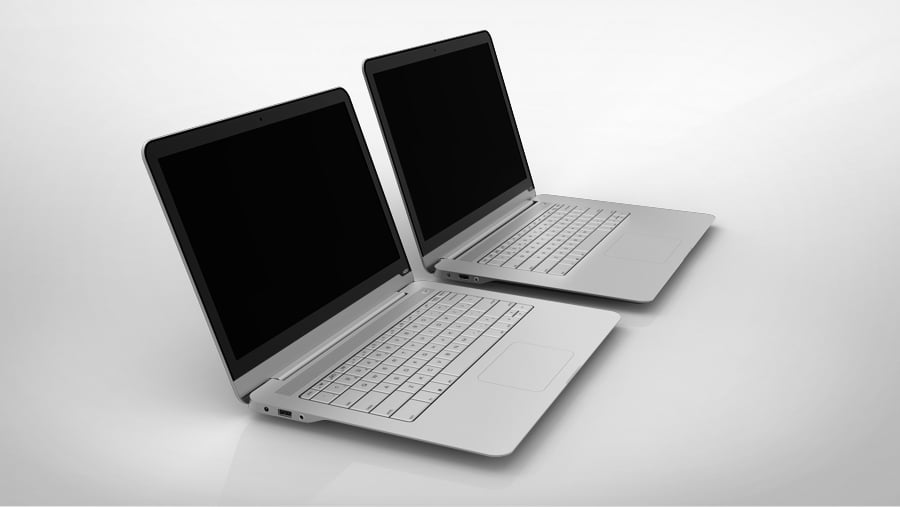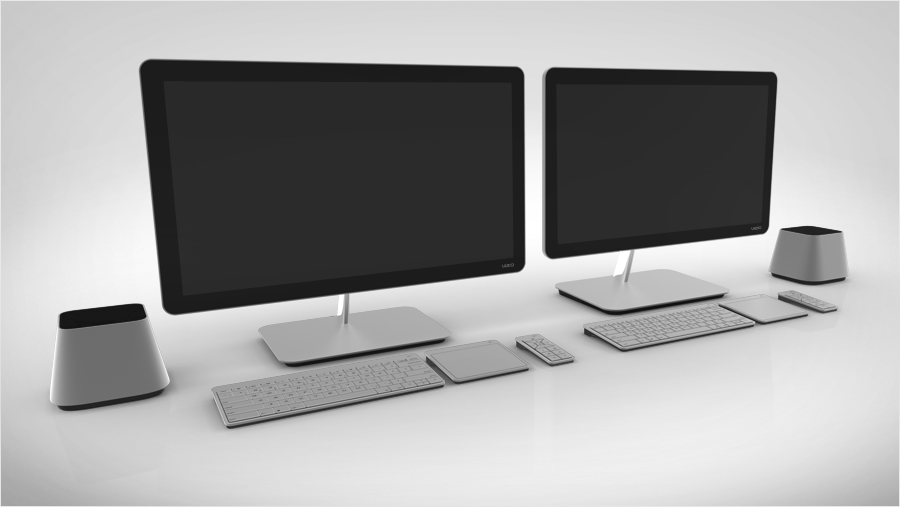One of the most heated debates on the internet is whether spending close to double what you would spend building your own desktop is worth it. As you are reading this, a few brands may immediately pop into your head such as Alienware, MSI, Asus and perhaps even Medion. The greatest challenge for me whilst writing this is to stay objective as I myself am current typing this on my third Alienware laptop.

I will use my accounts of owning a “gaming” notebook to help any reader make their own minds on whether owning such a machine is worth all that money spent. On Monday, UPS delivered to me my M17x R4, which was kindlly given to me by Dell to replace my M17x R3. First off and most importantly is the price – one may pay in the region of two grand for this “portable” computer and that is not counting the upgrades I will add throughout the course of the single year that I will own it before the draw of newer tech forces me to upgrade. With that money, I could have built myself a pretty beefy desktop will all the metaphorical bells and whistles and actual bells and whistles if I wanted to. The main reason is that I move around, a lot. And that makes owning a desktop out of the question. I carried my old M17x R3 back and forth in a backpack but honestly, I wish it didn’t need to. This 17 incher is about twice as thick and probably twice as heavy as the 17 inch MacBook Pro. For many, the weight and size of any gaming notebook is a definite deal breaker. The laws of physics just cannot be bent – power equals heat and a sleek slim form factor like that of the MacBook Pro just cannot contain that much heat produced by the much more powerful components inside.

So what about performance then? By now you may be thinking, maybe I can look past the bulkiness of the laptop as long as it provides me with what I need in terms of performance. A user should be buying a gaming notebook in order to play games, otherwise they are just plain stupid. The single feature of any gaming notebook that differentiates it from the crowd should be its graphics card. At the time of purchase, my Alienware M17x R4 had a GTX 660m as its base configuration; I configured mine with a GTX 680m, the top of the line notebook GPU at this time of writing. Do not fall into the trap of the naming schemes of mobile graphics cards compared to desktop ones. A GTX 680m is a far cry from the desktop GTX 680 but instead similar to a desktop GTX 670 with lower clock speeds. Now, the GTX 680m is able to pump out decent frame rates in most of the modern games with the exception of a few. Games such as Call of Duty – Modern Warfare 3 and Battlefield 3 all run with playable frame rates with details set to their maximum. Alienware is also not the only company offering this particular graphics card. Other gaming notebook lines such MSI and Clevo (resold by pwnpcs and PCSpecialist here in the UK) have their variants of the GTX 680m. Of course, for those that need to save a few quid, there are other configuration options such as AMD’s very respectable 7970m (comparable to a desktop 7870) and the lower GTX 660m offering mid- to low-tier graphics performance. For those looking to buy a gaming laptop, you MUST do your research as naming schemes like these are often used to catch users out with them spending lots of money and only receiving mediocre performance.
When reading this, some may have gone to the Dell website and configured a system to their own liking and noticed that the GTX 680m is much more expensive than the AMD 7970m despite being only a few percent quicker. Nvidia has generally always charged more for its flagship mobile GPUs and the rationale is that they offer more features such as PhysX and in the case of the M17x R4, 3D. That’s right, my rig has a Full HD 1080p 3D display utilising Nvidia 3D Vision 2; glasses come standard. Despite the AMD GPU being fully capable of driving a 3D display, Dell has chosen not to implement this so 3D = Nvidia. For those that have been wondering why I’m talking about Dell, Alienware is owned by Dell; all the warranty, repair and customer service is handled by them.
The next best thing about a gaming notebook is the potential upgradability. My M17x R4 is configured with the lowest Ivy Bridge i7 that Dell offers – the i7 3610QM. The CPU is no slouch with four cores and a CPU speed of up to 3.3Ghz (2.6Ghz when all four cores are on full load) but there were better CPUs which could clock up to faster speeds at a premium. The reason I went for the lower CPU was because unless you are doing CPU intensive work such as video rendering and data processing, other programs, which may seem intensive such as games, do not fully tax the CPU. Plus for paying customers, it is also the cheapest option. I also went for the least amount of RAM at the slowest speed because I knew that RAM would be easily upgradable for cheap. The CPU is upgradable and a few months down the line, I can decide to be adventurous and buy an i7 3920/3940XM CPU. The “XM” highlights that it is the extreme edition of the mobile processors and it has an unlocked multiplier. The unlocked multiplier is an enthusiast’s dream as it allows the user to define the clock speed of that they wish to run the CPU at (overclocking) provided there is sufficient supply of power and they can keep temperatures under control. I had a play with the same last generation i7 2920XM in my M17x R3 and successfully managed to increase the CPU from its default highest clock of 3.5Ghz all the way to 4.6Ghz running on all cores; stable albeit very hot under load. I had also replaced the 4GB of RAM that came with the laptop with 8GB running at a faster clock speed. This upgradability can be seen across all gaming laptop brands.
A few laptop vendors such as Alienware, MSI and Clevo allow graphics card upgrades. Mobile GPUs that are removable come in the MXM form factor and are hard to come by, and are very expensive when purchased separate. Visit the forums to find out more. Below are four of these modules for a size comparison against a 17 inch laptop.
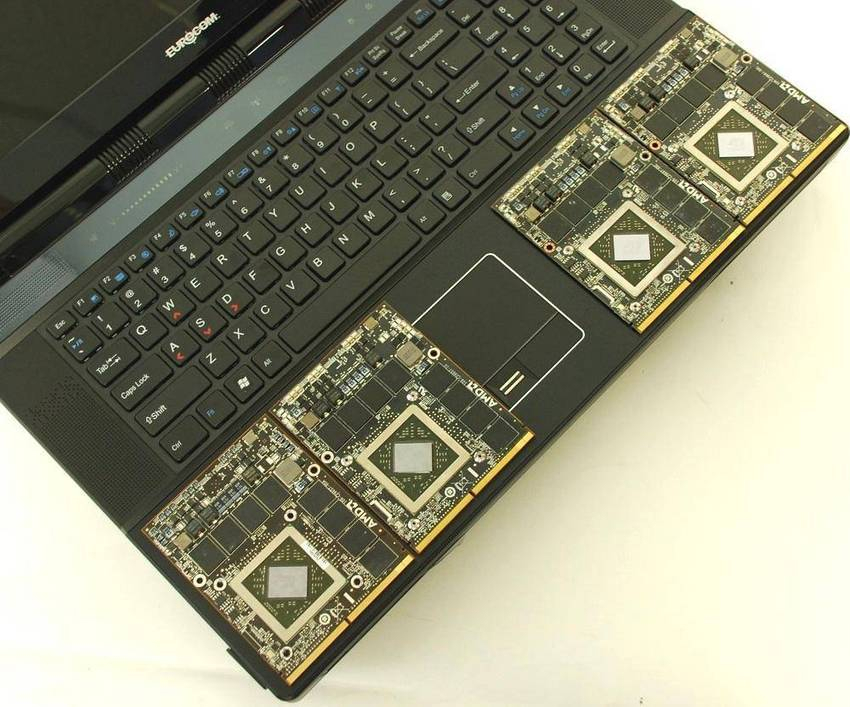
The single greatest upgrade that a user can perform on any laptop will be changing the regular spinning HDD (Hard Disk Drive) with an SSD (Solid State Drive). SSDs use flash storage similar to those found in SD cards and memory sticks and offer far quicker performance compared to regular hard drives. My computer boots from cold to usable desktop in under 15 seconds, a feat unachievable when using an ordinary HDD. Games load quicker and the system is noticeably snappier. There will be an upcoming post focusing on the benefits of SSDs so stay tuned.
As of 2009, the laptop market finally overtook the desktop market. More people are buying laptops compared to desktops but there will still be religious system builders that will consider a gaming laptop a plain waste of money. The truth is that laptops will always perform one or two steps slower than any desktop built with even half its cost. For 2-3k, the only reason for a buyer to look at the possibility of buying a gaming notebook over a desktop is to have some performance on the move. I have heard people wanting to buy these flashy systems plainly to show off to their friends. Speaking from experience, the stares and gasps are only good the first time. After that, you are left at the back of the group desperately trying to drag your monstrosity of backpack onto your already painful shoulders and just looking like an idiot. Gaming laptops are the best for LAN parties and gaming on the move and that’s about it. They will offer far more features than any ordinary notebook or ultrabook such as dedicated graphics, quad-core overclocked processors, 3D displays and even WirelessHD but they are almost always way overpriced. The single best advice I have given anyone wanting to buy one of these is this: Never configure one online and press buy, phone up and haggle. Dell sales reps are paid by commission so they’ll be willing to budge on price and throw in an extra thing or two, and never over configure, pay for only what you know you cannot upgrade anymore, then buy the rest on eBay.
